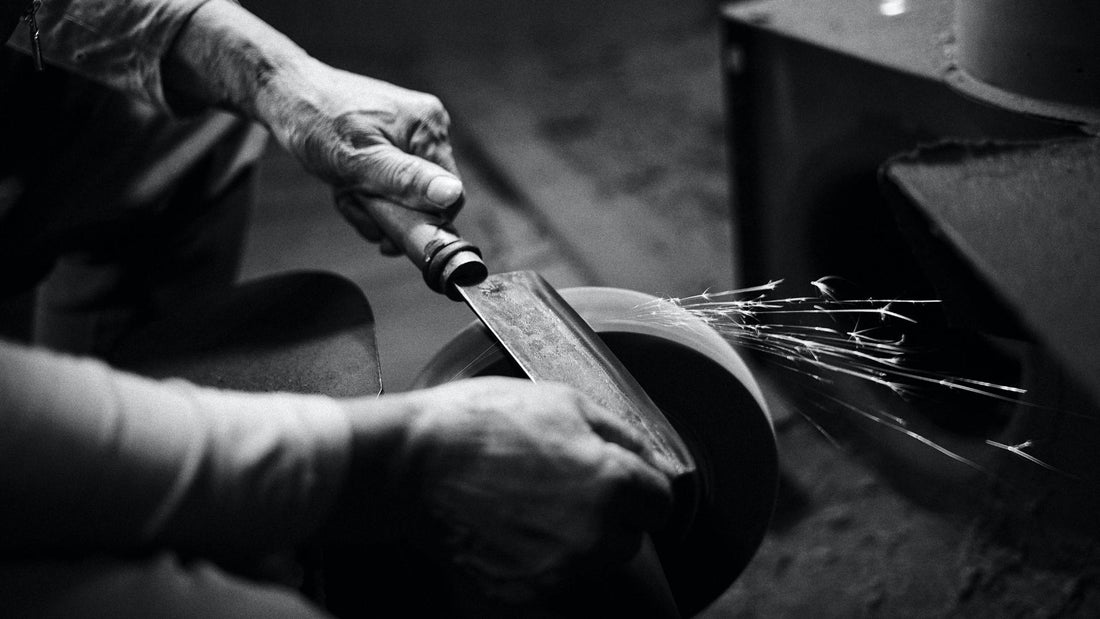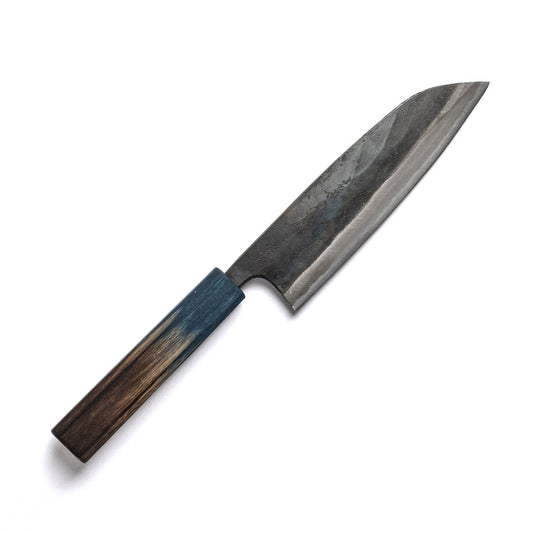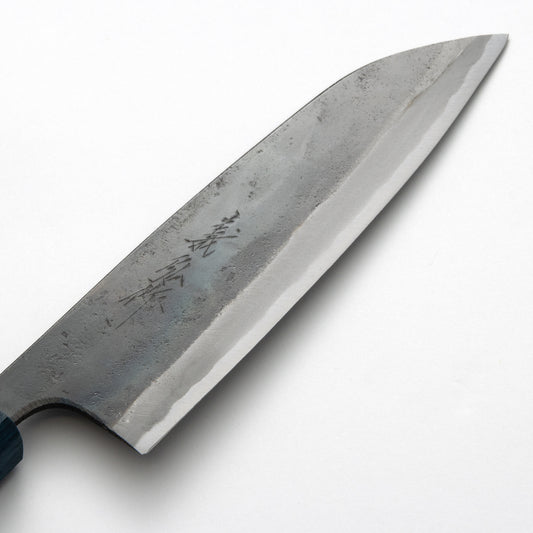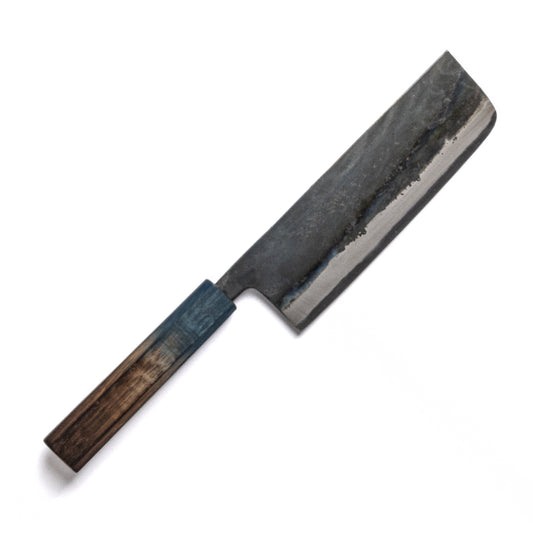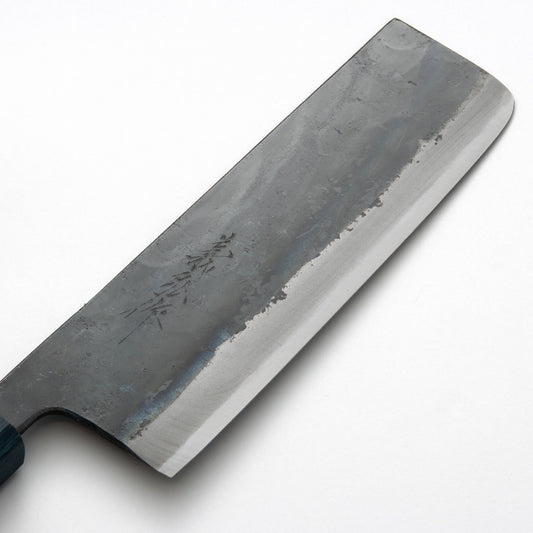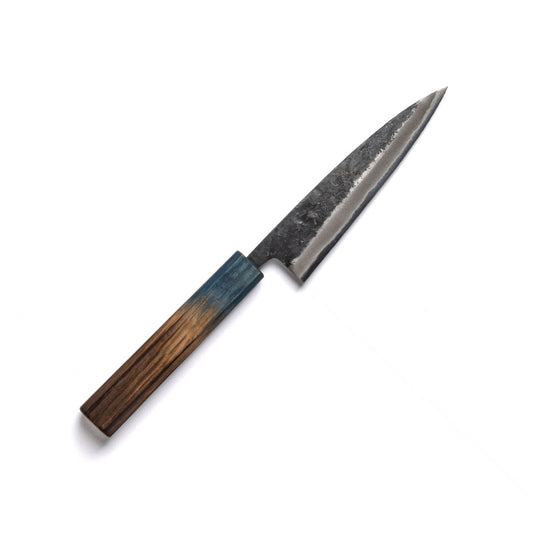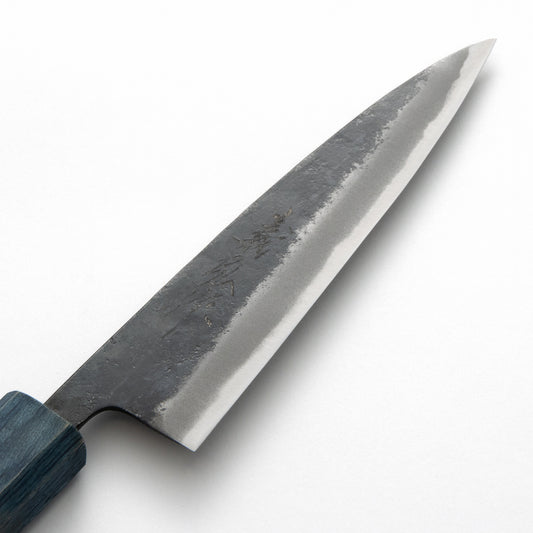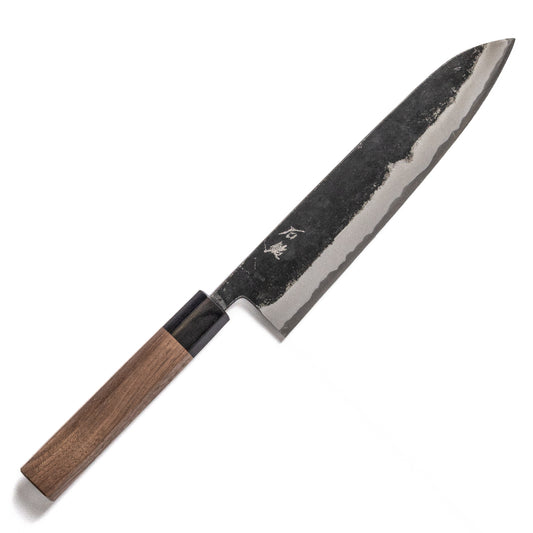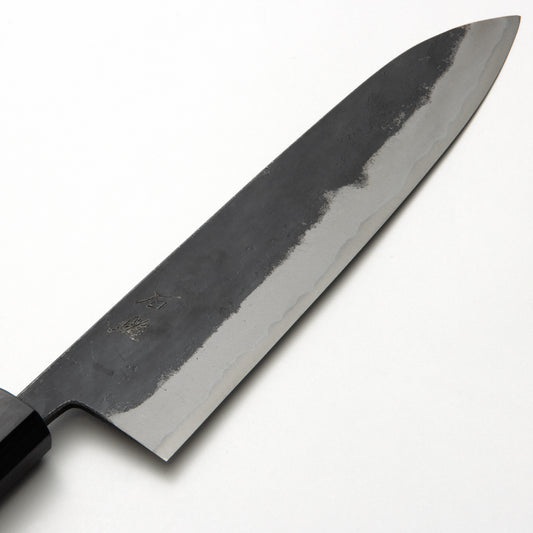In this guide, we'll uncover both the traditional techniques used to keep these tools in top shape, as well as methods that even beginners can master.
Contents
The Essence of Japanese Knife Sharpening

Japanese knife sharpening techniques are a blend of skill, patience, and respect for the blade's craftsmanship. Traditional methods primarily involve using whetstones and honing rods. These techniques sharpen the blade and maintain its geometry, ensuring optimal cutting performance.
Knife Sharpening: Step-by-Step Process

Learning the more traditional method of Japanese knife sharpening involves two primary techniques: the process of using whetstones to refine the blade's edge and the art of honing rods to maintain its razor-sharp finesse. Here are the step-by-step processes for how to sharpen your cutlery with these techniques.
Using Whetstones:
- Preparation: Soak the whetstone in water for about 15-30 minutes. This prevents excessive friction and ensures effective sharpening.
- Positioning: Place the whetstone on a stable surface, often with a damp cloth underneath to prevent slipping. Hold the knife at a 15-20 degree angle against the stone, with the edge facing down.
- Initial Grinding: Start with a coarse grit stone and move the blade in a sweeping motion across the stone. Maintain a consistent angle and alternate sides after a few strokes. Repeat until a burr, a slight ridge on the opposite side of the edge, forms.
- Refinement: Progress to finer grit stones, repeating the process. This refines the edge and removes the burr. Maintain steady pressure and consistent angles throughout.
- Polishing: For a polished edge, use even finer grit stones. This step further refines the edge and enhances cutting performance.
Using Honing Rods:
- Hold Steady: Hold the honing rod vertically with its base on a stable surface. Hold the knife at a 15-20 degree angle to the rod.
- Alternate Sides: Starting with the heel of the blade, drag it down the rod while moving towards the tip — alternate sides after each stroke.
- Consistency: Repeat the process 8-10 times on each side. The honing rod doesn't remove metal like whetstones; it realigns the edge.
Tips for Achieving Razor-Sharp Edges

- Angle Consistency: Maintaining a consistent angle throughout sharpening is crucial. Practice and patience will help you achieve this precision.
- Pressure Balance: Apply even pressure on the blade to ensure uniform sharpening. Avoid excessive force, as it can lead to uneven edges.
- Test the Edge: To check sharpness, try slicing through a piece of paper or a tomato. A well-sharpened knife will glide through effortlessly.
Maintaining the Knife's Geometry
Maintaining the knife's original geometry—its shape and edge angle—is essential. Regular honing with a honing rod helps preserve the edge between sharpening sessions. Avoid using pull-through sharpeners, as they can damage the knife's delicate edge and alter its geometry.
Easy Tips for Beginners

For those new to Japanese knives, mastering traditional sharpening techniques might feel daunting.
As a beginner, consider these methods:
- Manual Sharpener: Choose a manual sharpener designed explicitly for Japanese knives. These tools guide you in maintaining the correct angle and are easier to use.
- Sharpening Services: Professional knife sharpening services can help restore your knife's edge. However, they might not maintain the exact traditional Japanese geometry.
Everyday Maintenance

Preserving the brilliance of your Japanese knives is a blend of simple daily practices and essential routines. Begin by opting for gentle wood or plastic cutting boards and hand washing with mild soap and warm water. Swiftly dry your knife to prevent rust, and avoid the dishwasher to safeguard the blade. Embrace the daily honing ritual using a honing rod—just a few passes per side will suffice. Finally, store your knife safely using a magnetic strip, knife block, or blade guard. By weaving these uncomplicated habits into your culinary routine, you elevate not only the longevity of your knives but also the artistry of your every creation.
If you would like to learn more about everyday care tips for your Japanese Knives, check out our blog of 6 top tips for knife care!
In Conclusion
The art of Japanese knife sharpening is a journey that requires dedication and practice. Embracing traditional methods like using whetstones and honing rods allows you to connect with the craftsmanship of your knives while achieving unparalleled sharpness. As you hone your skills, remember that a sharp knife not only enhances your culinary creations but also deepens your appreciation for the culinary craft itself.With patience and persistence, you'll master the art of knife sharpening and enjoy the peak performance of your Japanese knives for years to come.


